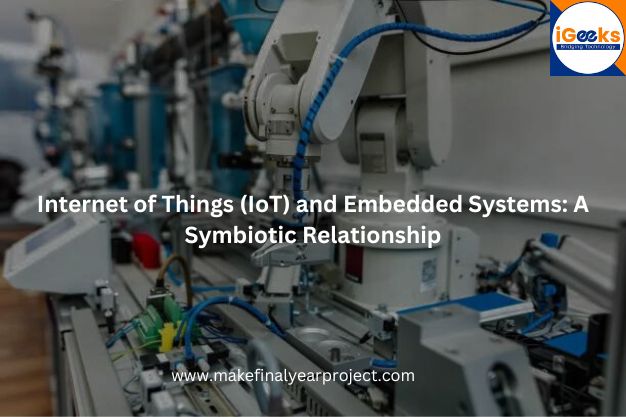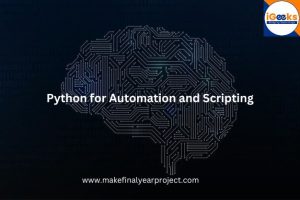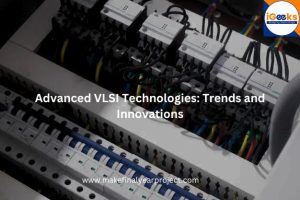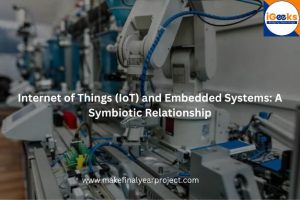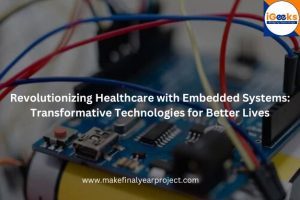By iGeeks Technologies:
Unlock the power of deep learning with these hands-on Python projects. At iGeeks Technologies, we believe in the transformative potential of deep learning, and these projects are designed to give you practical experience in implementing cutting-edge solutions. Explore the intersection of Python programming and deep learning algorithms with these engaging projects.
Internet of Things (IoT) and Embedded Systems: A Symbiotic Relationship
The Internet of Things (IoT) and embedded systems have formed a symbiotic relationship, driving innovation and transforming industries across the globe. In this blog, we explore how these two technologies intersect, collaborate, and create new opportunities for connectivity, automation, and efficiency.
The Intersection of IoT and Embedded Systems
At the heart of the IoT revolution are embedded systems, compact computing devices embedded within larger systems or products. These embedded systems provide the intelligence and processing power necessary to collect, process, and transmit data in IoT applications.
IoT devices, ranging from smart thermostats to industrial sensors, rely on embedded systems to perform their core functions. Embedded systems enable IoT devices to sense their environment, communicate with other devices or systems, and make autonomous decisions based on predefined rules or algorithms.
The Collaboration in Action
The collaboration between IoT and embedded systems extends to numerous industries and applications, enabling a wide range of innovative solutions:
- Smart Agriculture: Embedded systems integrated into IoT devices such as soil moisture sensors and automated irrigation systems help optimize crop management, enhance yield, and conserve water resources. These systems gather real-time data on soil conditions, weather patterns, and crop health, allowing farmers to make informed decisions and implement precision agriculture techniques for sustainable farming practices.
- Smart Energy: In the energy sector, IoT-enabled smart meters and embedded systems facilitate real-time monitoring of energy consumption, enabling utilities to optimize distribution, detect faults, and promote energy efficiency. Embedded systems process data from smart meters to provide insights into energy usage patterns, identify areas for improvement, and support demand-response initiatives, ultimately leading to reduced costs and environmental impact.
- Transportation: Embedded systems power IoT devices in vehicles, enabling features such as vehicle diagnostics, fleet management, and driver assistance systems for improved safety, efficiency, and maintenance. These systems utilize embedded sensors, actuators, and communication modules to monitor vehicle performance, track location, and provide real-time alerts on potential issues, enhancing overall fleet operations and passenger experience.
- Retail: IoT-enabled embedded systems are utilized in retail environments for inventory management, shelf monitoring, and personalized customer experiences through smart shelves, beacons, and digital signage. Embedded systems capture and analyze data on product availability, customer traffic, and purchasing behavior, enabling retailers to optimize stocking levels, enhance product visibility, and deliver targeted promotions tailored to individual preferences, thereby improving sales performance and customer satisfaction.
The Future of Connectivity and Automation
The collaboration between IoT and embedded systems continues to drive innovation, leading to advancements in connectivity, automation, and efficiency. As both technologies evolve, we can expect to see:
- Greater Integration: Embedded systems will become increasingly integrated into IoT devices, enabling more sophisticated functionality and intelligence. This integration will allow for seamless communication, data processing, and decision-making at the edge, reducing latency and enhancing overall system performance. For example, in smart homes, embedded systems will not only control individual devices but also analyze data locally to optimize energy usage and enhance user comfort.
- Expansion of IoT Applications: IoT applications will expand into new domains, such as smart cities, autonomous vehicles, and precision agriculture. These applications will leverage embedded systems to enable intelligent sensing, actuation, and control, driving improvements in urban infrastructure, transportation efficiency, and agricultural productivity. In smart cities, embedded systems will monitor traffic patterns, manage energy consumption, and enhance public safety through real-time data analysis and predictive modeling.
- Enhanced Security and Privacy: As IoT ecosystems grow in complexity and scale, there will be an increased focus on enhancing security and privacy measures to address concerns surrounding data privacy and cyber threats. Embedded systems will play a crucial role in implementing robust security protocols, encryption algorithms, and access control mechanisms to safeguard sensitive data and prevent unauthorized access or tampering. For instance, in healthcare, embedded systems will employ encryption techniques and secure communication protocols to protect patient data transmitted between medical devices and cloud servers, ensuring confidentiality and integrity.
The future of connectivity and automation holds immense promise, driven by the ongoing collaboration between IoT and embedded systems. With greater integration, expanded applications, and enhanced security measures, these technologies will continue to revolutionize industries, improve quality of life, and pave the way for a more connected and efficient world.
Conclusion
The symbiotic relationship between the Internet of Things (IoT) and embedded systems has ushered in a new era of connectivity, automation, and efficiency. Together, these technologies enable innovative solutions across industries, driving digital transformation and shaping the future of our interconnected world.
As IoT continues to expand its reach and embedded systems become more sophisticated, we can expect to see further advancements in connectivity, automation, and intelligence. This collaboration holds the potential to revolutionize various domains, from smart cities and healthcare to agriculture and manufacturing.
Embrace the collaboration between IoT and embedded systems and explore the limitless possibilities it offers for creating smarter, more connected environments. By leveraging these technologies effectively, organizations can unlock new opportunities for efficiency, productivity, and competitiveness in the digital age.

